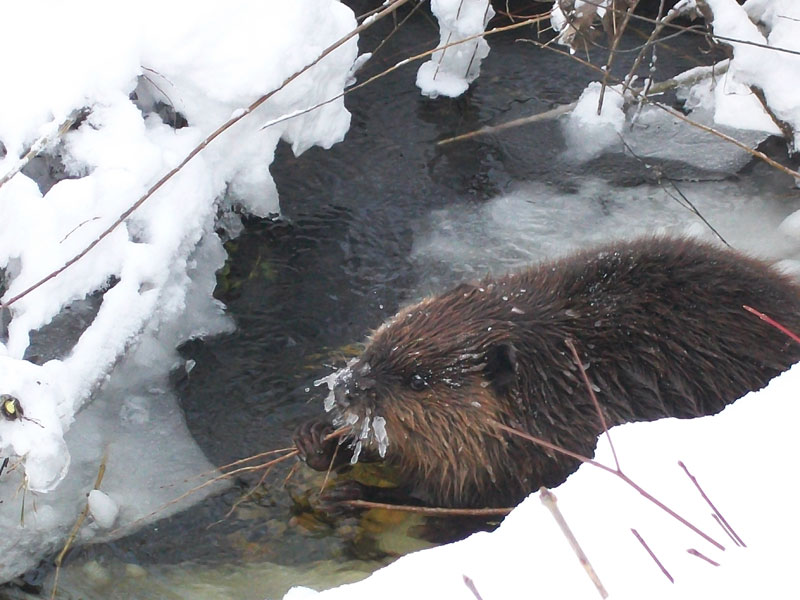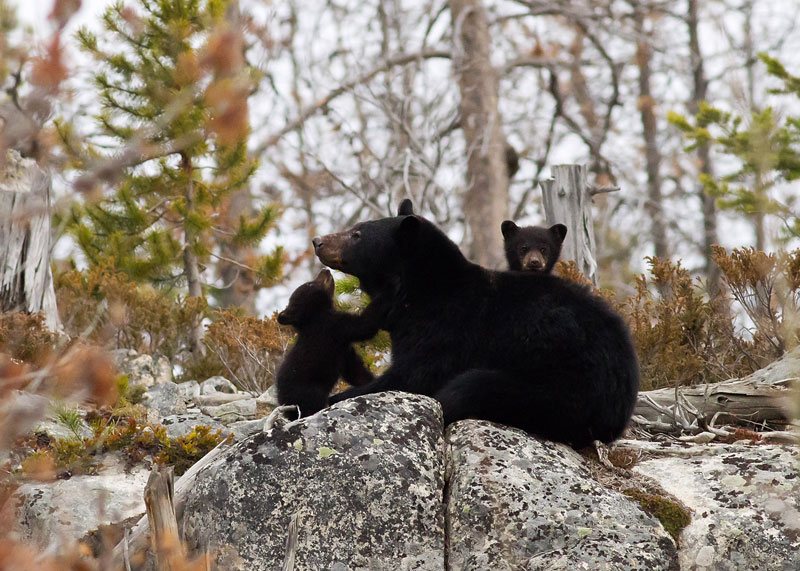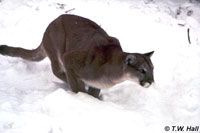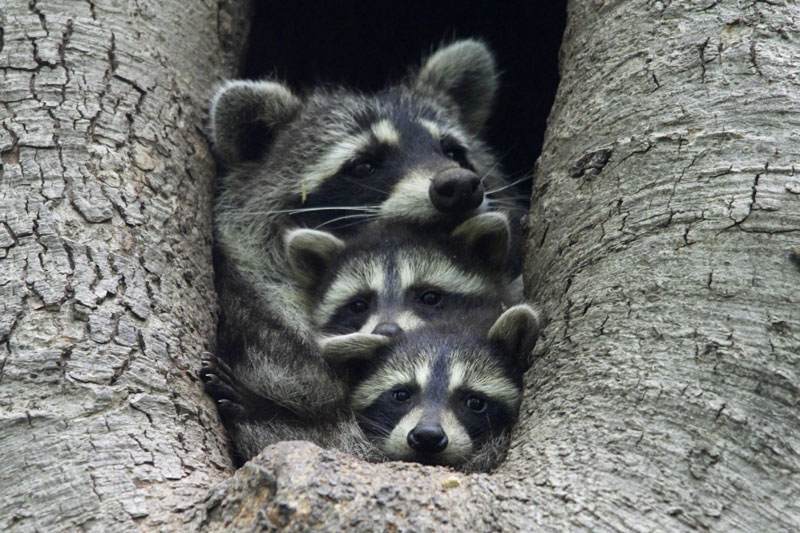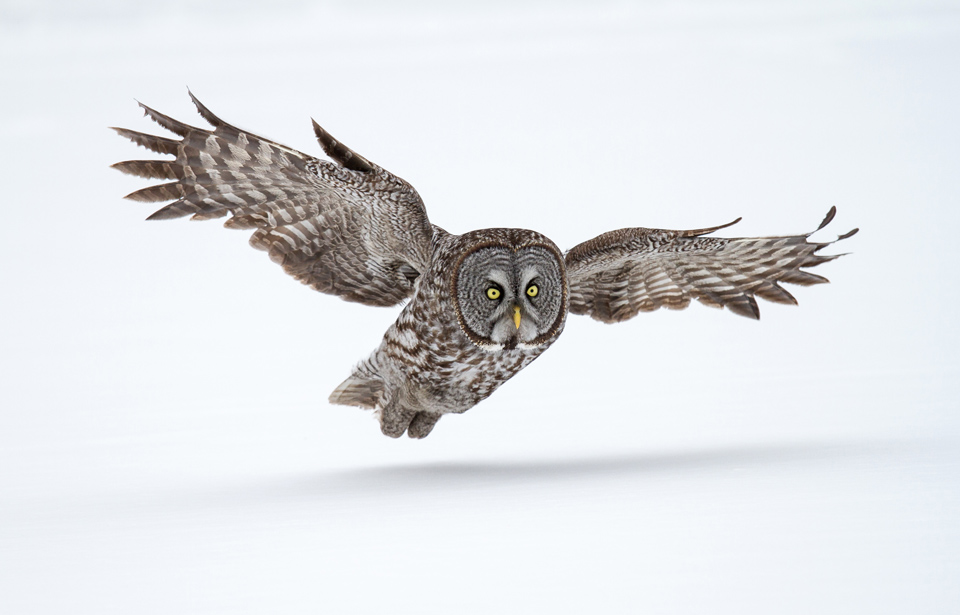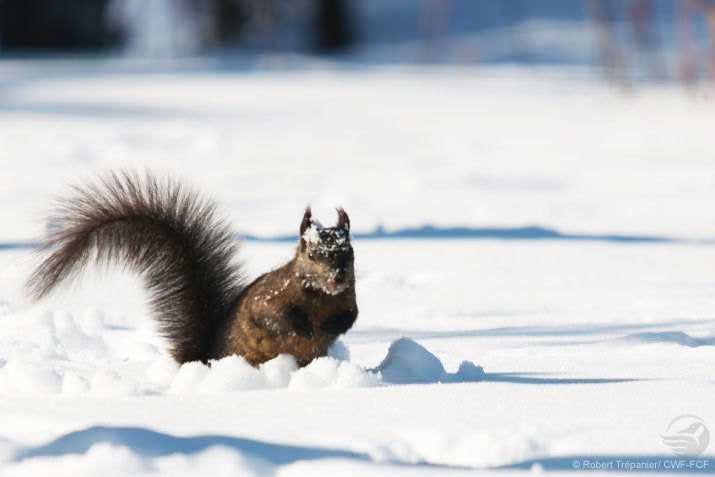Just like humans, wild creatures need water, food, shelter and space in order to survive. The four basic habitat elements also need to be arranged in a particular way to suit each species. A moose, for instance, needs far more space than a mouse. Some desert creatures can survive very nicely without ever drinking water, but many species would die without an abundant supply of water.
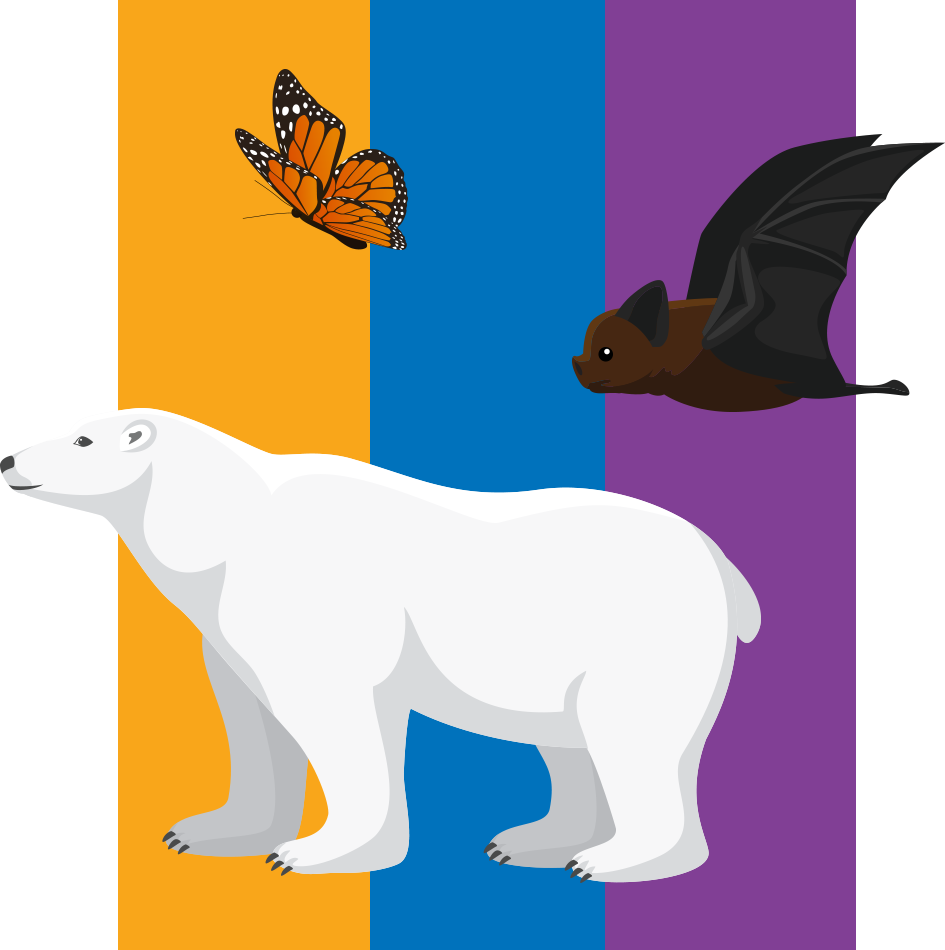
Let's move out!
Some Canadian species migrate in the winter to areas with greater food availability and better conditions for survival.
Learn More >
Duck and Cover
When in hibernation, animals have low body temperatures and slow breathing, heart and metabolic rates. Only a few species can hibernate efficiently,
as it means surviving on limited fat resources for an uncertain length of time.
Learn More >
Adapt or Die
Winter complicates all this for wildlife. Some animals adjust their habits in order to cope with winter. Those that stay active all winter, adapt in many ways.
The colder it is, the more energy it takes to stay warm. This means that if animals must use more energy than usual to find food, or to run from predators, they are in more danger of dying from the cold.
Learn More >
Wildlife in Winter Poster
Wildlife is active during the winter… And so can you! Download our "Wildlife in Winter" Posterto learn more.
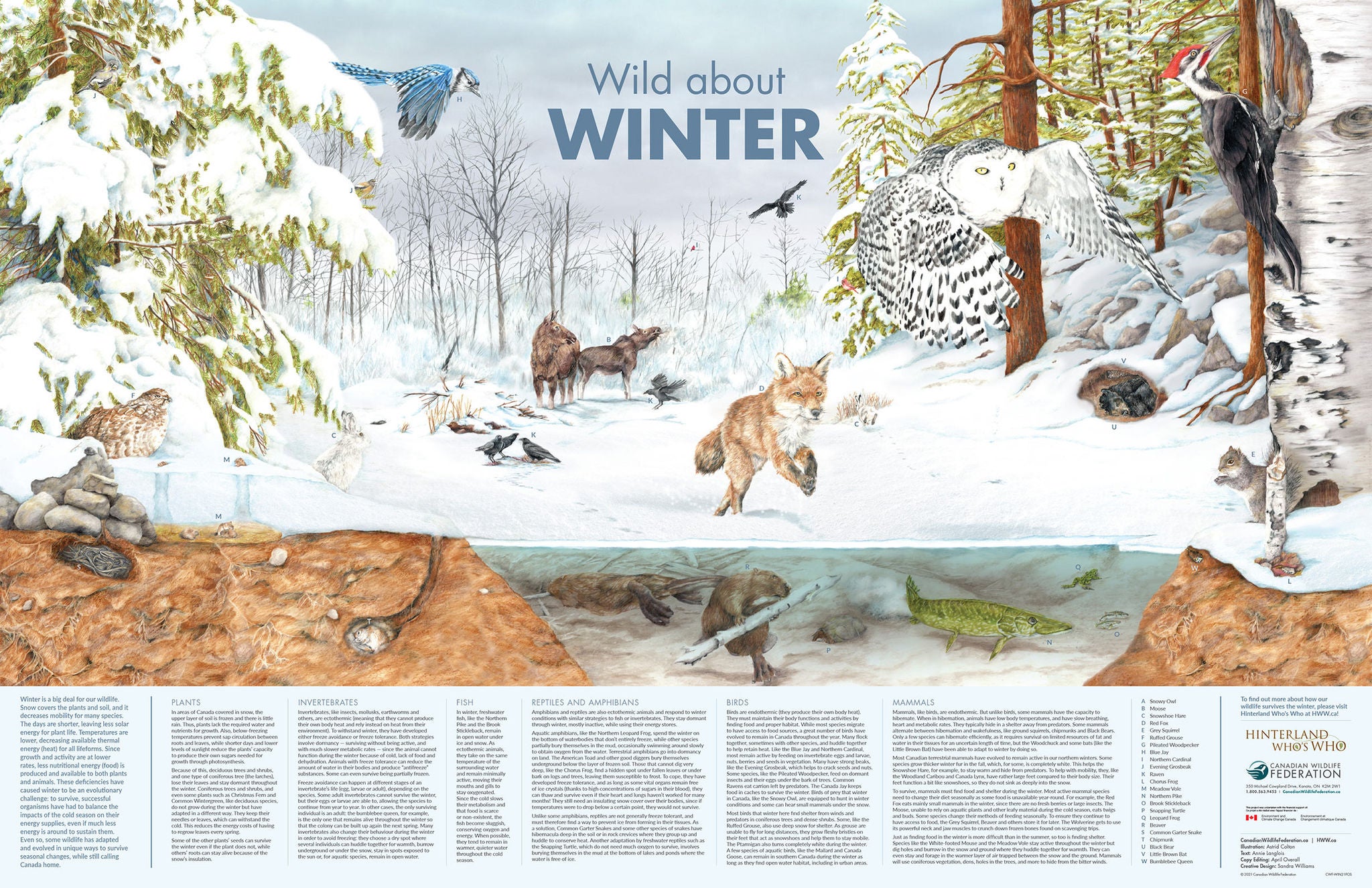
Some Wild Life in Winter
Some sleep all winter. Some stay active in a neverending struggle to survive. There’s no end to the interesting information on some of Canada’s most iconic species. Here are some facts from Hinterland Who’s Who:
Beaver
Black Bear
Cougar
Raccoon
Snowshoe Hare
White-tailed Deer
We're All Adaptable Animals
If there’s one thing that defines the lives of those species that inhabit the Great White North, it’s their ability to adapt to their environment.
Whether mammal, invertebrate, reptile, amphibian, plant, fish, bird, or human, species have learned to adapt and build resilience to harsh Canadian winter climate in order to survive – especially when temperatures drop below zero!
Adapt We Must
Given the changes that occur in the normally inviting landscapes found across Canada, adapt we must. For example, there are changes to vegetative cover, as the loss of leaves from deciduous trees make a more open environment. As a result of such transformation, some summer habitats do not provide sufficient shelter from the cold winter air and wind. In some areas the ground freezes, making it inhospitable for some species. Ice forms across many aquatic habitats, creating a sheltered layer of stable-temperature water where less nutrients, energy and oxygen are found. Snow blankets a great deal of the country, making movement harder and reducing food sources. As wonderful as Canada can be in mid-August, it can be extremely harsh in mid-February!
The point is, we are all “adaptable animals” when temperatures drop below zero. What’s surprising are the many similarities in the winter survival tactics both humans and wildlife use to make it through till spring. Here are a few obvious examples of the way we humans share similar traits to our wildlife counterparts:
Wildlife
Human
Many species grow thicker coats to protect themselves from the elements
⇿
Many humans buy thick coats, toques, insulated gloves and fur-lined boots to stay warm
Many species store fat to ensure they have enough energy to survive
⇿
Many humans experience weight gain as an unavoidable consequence of being less active in the winter
Some species hibernate
⇿
Some humans rarely leave the house until spring, conserving their energy while watching hockey and Netflix, leaving only to find food
Some species migrate to warmer southern habitats
⇿
Some humans migrate to various sun-soaked winter homes or all-inclusive resorts
Some species adjust their diet as some of their normal food sources are unavailable
⇿
Humans who don’t can foods or preserve meats turn instead to imported fruits, vegetables, and other foods as many locally grown and raised plant foods are unavailable
Some species line nests and shelters with foliage designed to reduce heat loss
⇿
Humans insulate their homes, install furnaces or burn fires in fireplaces to generate heat
Some species find time to frolic in the snow-covered winter landscapes they inhabit
⇿
Some humans enjoy the “thrill of the chill” by skiing, hiking, skating and winter hiking
Some animals, like the snowshoe hare, have genetic features that allow them to move through snow easier
⇿
In order to traverse slippery, snow covered terrain, humans use skis, cleats, and snowshoes to make winter walking easier
The hair, fur, coats, and plumage of some species turns white in winter, like snowshoe hares, Peary Caribou, Arctic Foxes, and ptarmigans
⇿
Humans avoid wearing white, choosing instead colourful hockey jerseys, fashionable coats, scarves, toques, snow and ski suits
Discover More at Hinterland Who's Who
To discover all the unique ways Canadian wildlife species adapt and thrive in adapts, visit our Hinterland Who’s Who page on Wildlife in Winter. You'll find videos, wildlife facts, games and more!
- 0
